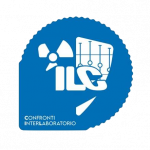
To measure how well a company will meet its short-term debt obligations, a company should be mindful of its liquid assets. On the balance sheet, assets become less liquid by their hierarchy. As such, the long-term assets portion of the balance sheet includes non-liquid are any assets easily converted into cash within one calendar year assets. If current assets are those which can be converted to cash within one year, non-current assets are those which cannot be converted within one year. On a balance sheet, you might find some of the same asset accounts under Current Assets and Non-Current Assets.
They can and cannot include inventories, as inventory takes time to sell. Current assets is usually a line item on a balance sheet and typically does not need to be calculated. A critical part in understanding the liquidity of marketable securities is their holding duration. Liquid assets must be convertible to cash quickly; depending on the nature of the security, this isn’t always possible.
Financial Liquidity Measurements
Cash and cash equivalents are a group of assets owned by a company. For simplicity, the total value of cash on hand includes items with a similar nature to cash. If a company has cash or cash equivalents, the aggregate of these assets is always shown on the top line of the balance sheet. This is because cash and cash equivalents are current assets, meaning they’re the most liquid of short-term assets.
He is a CFA charterholder as well as holding FINRA Series 7, 55 & 63 licenses. He currently researches and teaches economic sociology and the social studies of finance at the Hebrew University in Jerusalem. In the fiscal year 2021, Disney reported total revenue of $67.4 billion. The company also emerged from the pandemic and reported a net income of $2.5 billion, turning the company around from a loss in 2020. It could be argued that Disney’s financial performance in 2021 was better than in 2020.
Cash vs. Cash Equivalents
Examples of cash equivalents include Treasury bills, Treasury notes, commercial paper, certificates of deposit (CD), or money market funds. Note that some items may have less liquidity based on terms of the vehicle. For example, some CDs can not be broken or require a substantial penalty for early termination.
They typically use liquidity ratios to compare the assets with liabilities and other obligations of the company. Some common ratios are the current ratio, cash ratio, and acid test ratio. Once having the value for net current assets, you can now analyze whether the company appears to be in good or poor financial health. If your calculation results in a positive number, you know that the company has a positive working capital and should be able to meet its short-term debt obligations. If the calculation results in a negative number, whereby current liabilities exceed current assets, the company may run into problems paying back creditors in the short term.
Stay up to date on the latest accounting tips and training
A balance sheet is an important financial statement that shows a company’s assets, as well as its liabilities and equity (net worth). The quick ratio is important to creditors and investors who want to predict your company’s ability to pay debts or fulfill contracts within one year. The second reason current assets are important is that they can affect a company’s working capital ratio and working capital. In your case, having more current assets than current liabilities shows that you have a healthy amount of current assets. On one hand, a company has a legal claim to cash that is due to them often as part of their business operations.

They are also used to calculate a company’s current ratio, which is often used as an indicator of how likely the company will be able to pay its short-term debts and obligations. This is relevant for local businesses because it determines the amount that is available to fund day-to-day business operations and ongoing operating expenses. Current assets are short-term assets that a company expects to convert to cash, use in the course of business, or sell off within a one year time period.
Get Your Question Answered by a Financial Professional
Cash and cash equivalents refers to the line item on the balance sheet that reports the value of a company’s assets that are cash or can be converted into cash immediately. Cash equivalents include bank accounts and some types of marketable securities, such as debt securities with maturities of less than 90 days. However, oftentimes cash equivalents do not include equity or stock holdings because they can fluctuate in value. Current assets include cash, cash equivalents, accounts receivable, stock inventory, marketable securities, pre-paid liabilities, and other liquid assets. Cash is the most liquid asset, and companies may also hold very short-term investments that are considered cash equivalents that are also extremely liquid.
- Prepaid expenses are payments made in advance for a future service that has not yet been provided.
- Liquid assets are assets that you can quickly turn into cash, like stocks.
- A “good” amount of current assets can also vary by industry and your business’s goals.
- A company is also measured by the amount of cash it generates above and beyond its liabilities.
- Cash equivalents have certain benefits over cash that make them better for some investors.
- Management isn’t the only one interested in this category of assets, however.
